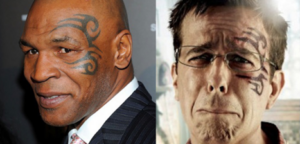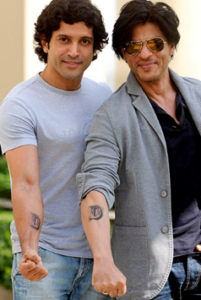R. K. Dewan & Co. | View firm profile
Once seen only on sailors and convicts, tattoos have found their way into mainstream society and are here to stay. There has been a considerable rise in the number of people who are seen sporting tattoos with themes that range from devotion to a particular rock band to the memory of a deceased loved one. For others, a tattoo is just a style statement without a deeper meaning associated to it. As a result, the tattoo business is blooming and several people with appreciable artistic talent are assuming the roles of tattoo artists.
Studies reveal that in the US, which is at the forefront of the tattoo business, more than 21% of adults have at least one tattoo and this percentage rises up steeply to about 38 % for people under the age of 40. The US tattoo industry generates $2.3 billion in annual revenues.
With the increase in their popularity and commercial value, several legal issues surrounding tattoos, that have been neglected until recently are slowly but surely coming to light. This article aims to analyse these legal issues and the different schools of thought regarding intellectual property in tattoos.
Origin-
Captain James Cook witnessed Tahitians engaged in the practice of “tattowing” in 1769 and through an account of his travels in Polynesia; he introduced the term “tattoo” in the English language. However there is strong evidence that indicates that tattooing existed as an art form long before Cook’s travels.
Egyptian mummies have been discovered tattooed with a dark, blackish blue pigment applied with a pricking instrument, perhaps consisting of one or more fish bones set into a wooden handle, dating back to as far back as 2100 B.C.
Tattoos and Intellectual Property-
Intellectual Property issues underlying the subject of tattoos are being looked at with a close eye after the advent of a few cases of copyright infringement for use/display of tattoos without consent.
A tattoo is a work of art like any other artistic work, and hence Copyright also exists in tattoos. Hence an original artwork of a tattoo created on a person’s body by a tattoo artist is an original artistic work in a tangible form and hence it qualifies for protection under the copyright law.
Ownership-
Ownership of the copyright in the artistic work in tattoos is a complex and controversial issue and needs to be dealt with on a case to case basis. In order to understand the ownership of copyright in tattoos, the following two situations need to be considered:
1) Custom Tattoos:
Client input is one of the aspects that helps shape the template of a custom tattoo. The process commences with a consultation, wherein the client gives the tattoo artist a brief idea of the kind of image he/she desires for the tattoo. At this stage, feedback from the client is sometimes very specific and at other times, the client is more perceptive to the tattoo artist’s recommendations. Because of their greater familiarity with theories of artwork and composition, as well as a clearer understanding of the limitations of the medium, tattoo artists frequently guide their clients towards choices that, while true to the client’s original conception, are more likely to translate well into tattoos.
The template of a custom tattoo is made with the help of the client’s inputs and at the instance of a client. The client pays consideration to the tattoo artist for the tattoo
and hence as per section 17 of the Copyright Act, 1957 the client will be owner of the copyright in the tattoo.
2) Tattoos incorporating a Tattoo Artist’s original artwork:
Very often, tattoo artists conceptualize and create original artworks on paper and record are a simpler form. Clients desirous of getting a tattoo look through the tattoo artist’s portfolio and opt for a artwork that appeals to them. The tattoo artist then applies the artwork on the client’s skin at selected location. The body portion of the client can be considered as a canvas. In this case, although the client pays the tattoo artist for the tattoo, the artwork was not explicitly conceptualized and created by the tattoo artist for the client. The artwork was created by the tattoo artist before the client was even in the picture and the tattoo can merely be considered as a derivative of the original artwork. In such a case, the tattoo artist will own the copyright in the artwork and merely grants a license to the client to display the same on his/her personal social media. However, the right of a client to display the work for commercial gain without the tattoo artist’s consent is again a matter of controversy and this issue had cropped up in a couple of cases.
Tattoo Flash
A tattoo flash is a printed artwork that can be turned into stencils for rapid tattooing. The person who creates the tattoo flash owns them and can sell them just like other copyrighted items such as books. Tattoo artists desirous of buying a tattoo flash, pay for them and acquire an implied non-exclusive license to use them and to reproduce them on as many clients as they choose. However, making copies of the tattoo flash itself and selling them would violate the copyright holder’s rights, in this case the stencil designer.
Limitation on Imitation?
The tattoo artist who had conceptualised and inked boxer Mike Tyson’s famous tattoo had sued Warner Bros. The allegation of the tattooist was that the studio had misappropriated the tattoo for its movie, The Hangover Part II.

*We do not claim any copyright in the above image. The same has been reproduced for academic and representational purposes only.
Victor Whitmill had tattooed the left side of the face of the former heavyweight boxing champion Mike Tyson in 2003, and had copyright registered in his work, as in the US Copyright Office.
In the motion picture, Hangover II, in one of the scenes in the movie, actor Ed Helms wakes up to find a similar tattoo which looks similar to that of the boxing champion inked on his face.
Victor Whitmill pleaded before the federal judge to restrain Warner Bros. from showing the tattoo at the promotional events of the film and in the comedy film itself. The federal lawsuit was filed in Missouri. The Whitmill claimed that the movie featured a virtually exact reproduction of the original, which appeared on the character played by actor Ed Helms.
Whitmill sought an injunction to halt the release of the highly-anticipated film, but his attempt was in vain. He also alleged that the movie producers didn’t seek permission before using the deceptively similar artwork on the face of Ed Helms. He further alleged that the producers were guilty of infringing his copyright.
Against this, Warner Bros. countered stating that even if Whitmill was the owner of the copyright in the tattoo, Warner Bros. had a legal right to reproduce the tattoo in The Hangover II under the doctrine of fair use.
The fair use doctrine is an exception to the exclusive rights granted by copyright law to its owner which allows for limited usage of copyrighted artwork without obtaining any permission from the original creator. This doctrine has been used in a plethora of cases as a defense to the claims of copyright infringement, including when someone recreates work owned by another rights holder in order to parody it.
Warner Bros. argued that the tattoo on Helm’s face in The Hangover II was in fact a parody of Tyson, who had a guest appearance in the film.
As per the U.S. Copyright Office, in order to successfully invoke the defense of fair use, a four factor test must be satisfied namely;
(1) The purpose and character of the use, including whether such use is of commercial nature or is for non-profit educational purposes
(2) The nature of the copyrighted work;
(3) The amount and/or substantiality of the portion used in relation to the copyrighted work as a whole;
(4) The effect of the use upon the potential market for, or value of, the copyrighted work.
However, before reaching trial, Warner Bros. and Whitmill “amicably” settled the copyright infringement lawsuit during a mediation session.
Does copyrighting a work of art, prevent other people from turning it into a tattoo/body art?
Katherine Von Drachenberg, (Von D) is a tattoo artist who rose to fame as a celebrity tattoo artist through appearances on the reality television series Miami Ink and LA Ink. In March 2017, Von D published two Instagram posts of a tattoo based photograph of jazz legend Miles Davis, holding a finger to his lips for a lighting technician and her friend named Blake Farmer, (who had worked with Von D on a film project.) Von D used the photograph, which was provided by Farmer, for reference.

Source – Court filings
*We do not claim any copyright in the above image. The same has been reproduced for academic and representational purposes only.
The photo was captured by photographer Jeffrey B. Sedlik (Sedlik) in 1989, which had originally appeared on the cover of Jazziz magazine, and featured in Life magazine’s annual “Pictures of the Year” issue.
In 2021, Sedlik sued Von D, claiming that the tattoo was an unauthorized derivative work, and that its creation as well as upload on social media itself was an infringement of his copyright. Sedlik contended that Von D had received and enjoyed indirect economic benefit in the form of advertising, promotion, and goodwill. Sedlik filed a suit seeking not just profits and damages related to sharing the photo of the tattoo in question from Von D but also removal of all photos of the tattoo from Von D’s website and social media accounts. Sedlik further contended that he had previously licensed the portrait for use in a tattoo artwork however; Von D had misappropriated the portrait without any prior authorisation.
Sedlik further claimed that, it was common practice amongst photographers to license their copyrights to fellow artists for creating derivatives. However, when an artist creates a fresh work based upon a copyright without any authorization, the artist robs the photographer of the license fee which would be normally applicable in the case of an ‘artistic reference’.
Against this, Von D countered by stating that her version was transformative of the original image since she created the tattoo freehand, and added the appearance of the movement by adding and shading waves of smoke around the perimeter of Miles Davis’s hair and hand; thereby having created a sentiment of melancholy by eliminating the stark, black background which dominated the photograph.
After considering and reviewing the legal filings placed on record by both parties, the U.S. District Judge Dale S. Fischer observed that, a triable issue was raised as to whether there exists a market for future use of the portrait in tattoos and cited the ruling in Rentmeester v. Nike, 2017 in which it was ruled that an advertisement by the sneaker company featuring basketball legend, Michael Jordan did not infringe a similar photo of the basketball star.

Jacobus Rentmeester’s photograph of Michael Jordan (right) and Nike’s Michael Jordan ad (left).
*We do not claim any copyright in the above image. The same has been reproduced for academic and representational purposes only.
Since the Court decided to bring the matter to trial, a jury will now have to contemplate and decide “whether or not Von D’s tattoo falls under the doctrine of fair use, as well as whether such use of Sedlik’s image has denied the photographer a licensing opportunity.
The issue of whether tattoo artists have to obtain a license for reproducing their art has been a subject of legal struggle since long. In 2020, a U.S. Federal Court ruled in favour of a video game development company which had produced a game featuring NBA players with tattoos, finding that the players had the right to use the body art as part of their likeness.
In case of infringement the Court ruled, would result in the public display of the tattooed arm an act of infringement however, regardless of the outcome, the recipient of the tattoo will not be required to remove the artwork from his/her body.
Holding tattoo artists liable for copyright infringement would also expose the clients of such artists to a similar civil liability anytime they choose to get tattoos based on copyright source material, display their tattoos in public, or share social media posts of the same.
The ramifications of the ruling in the instant suit will be fascinating.
Position in India
The history of tattoos in India dates back as far as the 1980s, when permanent tattoos were common in the Northern and Southern regions of India and were called “Pachabottu“, “Pachakuthu” and “gonad“. Tattoos were considered as types of body modifications through which a artwork was created by injecting dyes, pigments, and inks into the layers of the skin, either permanently or temporarily, to change the pigment. Under the Indian Copyright Act, 1957, (Act) Tattoos inscribed on human skin are considered a “fixed tangible medium”. Since, this satisfies the Act’s statutory criteria for being an artist’s work; the same can be registered as copyrights.
With regards to merchandising, tattoos in form of merchandise cannot be copyrighted except if they are limited editions.

*We do not claim any copyright in the above image. The same has been reproduced for academic and representational purposes only.
While there have not been any instances of copyright infringement for tattoos in India as of yet, in 2011, the Indian Copyright Office, granted celebrity, Shahrukh Khan a copyright registration for his ‘D’ tattoo worn by Khan in his film Don 2 thereby proving the validation of tattoos as copyrightable works by the Indian Copyright Office. The reason for registering the tattoo and protect the copyright of the tattoo artwork was to use the artwork on the film’s entire range of merchandise like caps, T-shirts, bags and other stuff.
In case any person copies the artwork of a tattoo or does any of the acts listed in section 51 of the Indian Copyright Act, he will be liable for copyright infringement. In such a case, the remedies for copyright infringement stated in the Copyright Act such as an injunction and damages will be available to the copyright holder. However exercising the remedies that deal with delivery up of infringing copies and the power of the police to seize infringing copies would not be possible, because in such a case the infringing copy would be a person’s skin.
Conclusion:
It is recommended for artists to register the copyrights in their own tattoo artworks. In case the tattoos are a copy or a reference of any prior existing work, to obtain the appropriate licence.
For customers who have got tattoos as per their own conceptualizations, the original concepts should be registered as copyrights. However, if the template is from their own reference or creative inputs, customers must get the rights assigned for the artworks from the tattoo artists.
Similarly, if the tattoo artwork is referenced from any photograph, individuals desirous of getting a tattoo must ensure that the tattoo artist has sought proper authorization from the photographer who has clicked the photograph. Therefore one must know the link before getting inked!
Another aspect that requires an addressal is the enforceability of these rights and remedies once they are granted. For the protection and execution of these rights, a strong precedent is required that will define the limit the extent of injunctive relief that may be sought by the copyright holders without violating the infringer’s fundamental rights.